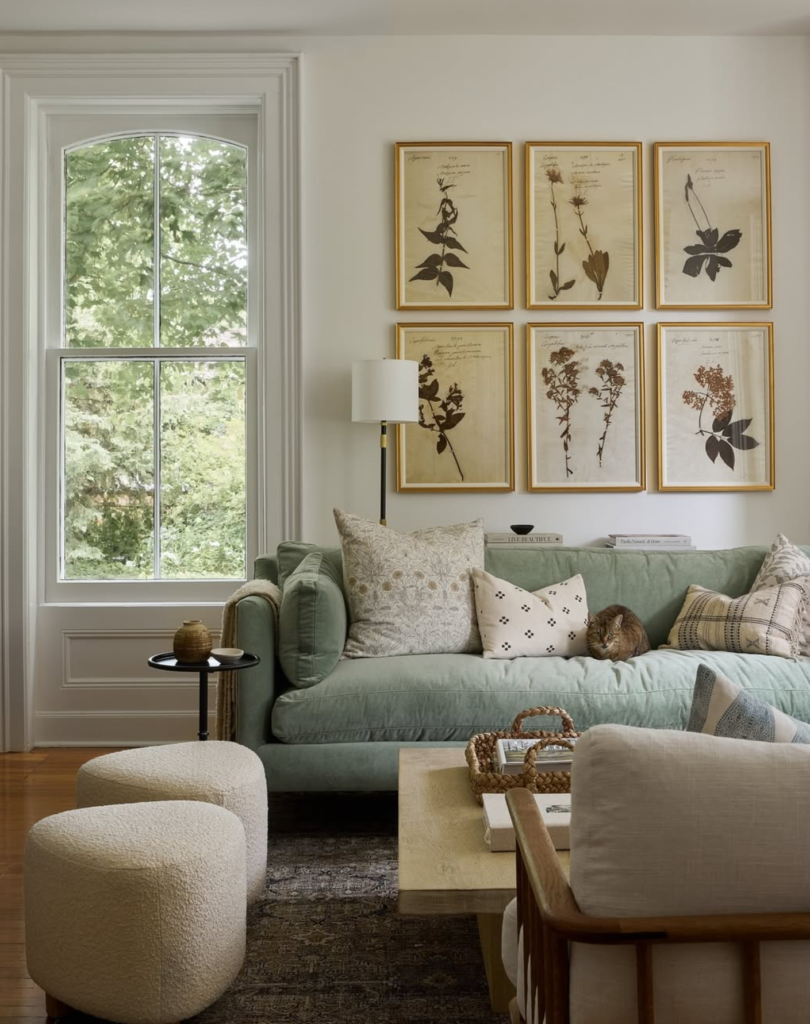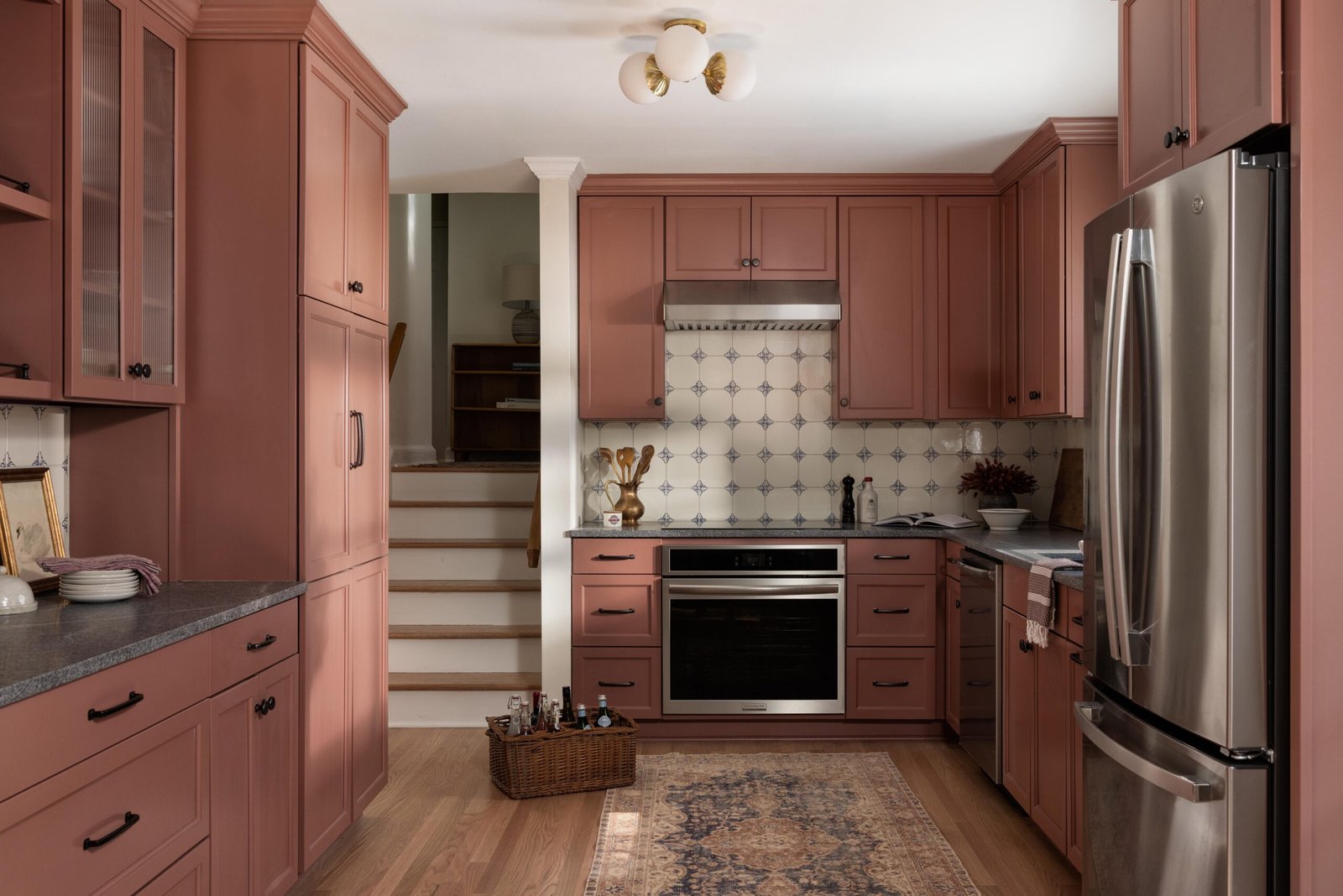“Your home should tell the story of who you are, and be a collection of what you love.”
– Nate Berkus

Art has long been a reflection of our humanity — a visual language for emotion, memory, and meaning. In our homes, it’s more than just decoration. Art brings personality, anchors a room, and tells the stories that make a space feel lived-in and loved. Whether it’s a vintage oil painting, a photograph from your travels, or a bold contemporary print, the art we choose — and how we choose to display it — says something about who we are and what we value.
As a former art historian, art holds a deeply personal place in my life. I rarely return from a trip without bringing something back — a vessel, a painting, something handmade that captures the spirit of a place. And while I could talk about art all day, I’ve learned that for many clients, it’s one of the hardest parts of decorating a home. Why? Because art is uniquely personal. It’s an expression of identity, and there are no fixed rules.
Still, even if you’re not a collector or confident curator, you can choose art with purpose and style. In this post, we’ll explore how to identify the kind of art that resonates with you, understand what styles suit your space, and hang it in a way that feels intentional and balanced — so your home feels like a reflection of your story, not just a collection of things.
Style Matters: Choosing Art That Speaks Your Language
Unlike a museum — where art exists purely for admiration — your home is a working, breathing space where art must live alongside function. And yet, the right piece can shift the entire mood of a room. At its core, art typically falls into two main categories: representational and abstract. Representational (or figurative) art includes recognizable subjects like people, landscapes, or still life. Abstract art, on the other hand, leans into color, form, and movement to evoke emotion without portraying a literal scene. Understanding the difference can help clarify your preferences — and guide you toward pieces that not only suit your space, but also reflect a feeling or memory worth keeping close.

Let It Breathe: Styling Abstract Art with Intention
Abstract art tends to thrive in modern or contemporary homes, where clean lines and minimal backdrops let bold shapes and expressive brushstrokes take center stage. In my experience, these pieces shine brightest when given room to breathe — either displayed solo or in small, well-spaced groupings. The negative space around them becomes part of the composition, allowing the artwork’s energy and emotion to fully come through.

Organic Meets Graphic: An Easy Entry Point into Art
A simple way to bring art into your home is through graphic shapes — like botanical prints pared down to clean, minimal outlines. They strike a beautiful balance between organic and modern, and a small grouping creates interest without overpowering the space. This style is remarkably versatile, working just as well in modern homes as it does in transitional or traditional ones.

Build Around What You Love
While I absolutely adore modern homes, my personal design style leans more traditional. I’m especially drawn to pastoral landscapes, expressive portraits, and architectural sketches. One of my most treasured pieces — a Spanish Impressionist painting I found years ago in an antique shop outside Portland — anchors the gallery wall above my sofa. I built the collection around it, mixing landscapes and sketches to create a timeless, layered look. Vibrant pieces balance beautifully with quieter prints or pencil drawings, keeping the composition from feeling too busy. In the end, choose what speaks to you — whether it’s the way light moves through a painting or the memory it stirs. That’s what makes a space truly personal.

Creating a Composition
Art as Part of the Whole
Just like a painting, the way you bring art into your home becomes part of a larger composition. Ceiling height and the furniture below the artwork play a key role in how that composition feels. As a general rule, when hanging art above a sofa, the sofa acts as the visual base – and that base should be wider and heavier than the art to create balance. The more symmetrical and structured your arrangement, the more formal the room will feel. On the other hand, mixing shapes and sizes creates a more relaxed, collected atmosphere.
Lets break down a few easy to do composions and what to consider:



This is a beautiful way to showcase a special piece of art – it has space to shine, while the asymmetrical composition keeps the overall look feeling relaxed and effortless.
A more formal composition – the single piece of art above the fireplace adds balance and height to the space. For proper scale, the artwork should be about two-thirds to three-quarters the width of the mantel.
A small piece of art on a kitchen wall adds charm and visual interest to an otherwise purely functional space, bringing warmth and personality where it’s least expected.



Two same-sized art pieces work best as a cohesive pair with a shared subject or style. The console anchors the arrangement, while a table lamp adds asymmetry to soften the structure.
The dresser acts as a grounding base, while the artwork above adds height and visual variety -introducing a contrasting rhythm to the repetition of the three stacked drawers.
When using artwork of the same size in a side-by-side arrangement, it’s best to choose a coordinated pair – photography works especially well for this type of composition.



A grid-like composition with same-size frames looks best when showcasing a coordinated set of prints or artworks. The headboard acts as a strong, wider base, while the art above adds height and visual interest to the overall arrangement.
Mixing different shapes and sizes creates a more eclectic, collected look. Round or oval frames help soften rigid lines, while consistent spacing between pieces keeps the arrangement feeling cohesive, even if edges don’t align.
Adding art to a staircase is a beautiful way to make the space more engaging as you move through it – inviting you to pause and enjoy a family photo or meaningful piece. Let the overall composition loosely follow the lines of the stairs below to create a natural visual flow.
Balancing Structure and Movement
Before hanging anything, consider the feeling you want the space to evoke – and how the surrounding elements contribute to it. For instance, nearby plants can soften a very structured layout, adding a sense of balance. In a room with a lot of architectural pattern, like wainscoting or a coffered ceiling, an eclectic mix of art can help break up the rigidity and bring warmth to the space. The goal is to create harmony, not perfection.

Use art to create cozy, intimate moments throughout your home. Don’t be afraid to mix in mirrors, sconces, or lamps to introduce playful shapes and textures. Asymmetrical compositions can feel more organic and relaxed – and as long as the overall arrangement feels balanced, they’re a beautiful way to soften the rigidity of walls, furniture, and architectural elements.
I hope this post took the fear out of hanging art and got you excited to start curating your own walls.



